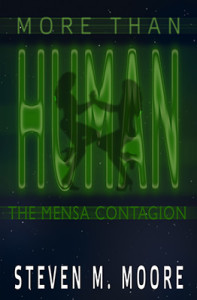Popular fiction…
Some literary wags consider this equivalent to “genre fiction” and look down their noses at it, while they prattle on and on about boring “literary classics” that high school English teachers use to torture their students. I prefer “popular fiction” as a descriptor because many avid readers actually flock to it in order to entertain themselves and learn things about the world as well—past, present, and future.
I don’t particularly like the word “genre” either. Today genres are only key words used to classify books, and these books exist to entertain. And, to rebut the wags, many of them treat themes of universal relevance for our times, unlike many “literary classics” where the reader is lost unless s/he knows the themes relevant at the time the literary classic was written.
Of course, pop fiction books fill a wide spectrum of quality. I’m an author, but I have a problem determining quality. I buy a book and am disappointed when it turns out to be a dud. Popularity correlates poorly with quality sometimes.
Amazon considers books just like any other product they sell, and we buy books with very little information about them. (How many book buyers use the “peek inside” feature? I do.) In their defense, though, they ignore whether a book is a “literary classic” and just let the publishers or authors do the labeling. They treat Jane Austen just like Isaac Asimov.
Pop fiction is big. It’s what most read for the most part, erudite academics and classicists being the exceptions. It never stops surprising me. There’s the good, the bad, and the ugly, and occasionally there’s the excellent. All of those descriptors are subjective, which is part of the fun: readers can talk about pop fiction books and how they react to them.
Maybe I’m old-fashioned. I’d rather sit in my recliner with my bit of Jameson and read a good story than watch some ridiculous TV show with scripts written by young scriptwriters who can’t write anything good because they know nothing about life. As a speed reader, I get through a book quickly. The good stories make me want more; the bad ones leave me thinking, “Why did I bother?” (That assumes I finished it, which I always do when reviewing.) And during the reading, I’m transported to other situations, even strange worlds, travel that only requires that recliner and Jameson whiskey (the latter might be a cup of Earl Grey tea if it’s a British-style mystery).
As you can tell from the “Steve’s Bookshelf” web page at this website, or from my book reviews, I also read non-fiction. I use information contained in those books too. For example, Isaacson’s Leonardo da Vinci was a resource for my new novel Son of Thunder, not for Leonardo, but for the Florentine setting he lived in, which Sandro Botticelli shared.
But I read a lot more popular fiction. I always have—sci-fi, mystery, and thriller stories mostly, the books I couldn’t get enough of as a kid…and still can’t. Now I’m also writing pop fiction books, telling my own stories.
***
Comments are always welcome.
More than Human: The Mensa Contagion. Amazon reviewer S. D. Beallis called it “broad in scope and cautiously optimistic.” Amazon reviewer Debra Miller said she “was reminded at times of Kim Stanley Robinson’s Mars trilogy.” Both comments indicate the epic nature of this one novel where an ET virus creates Homo sapiens 2.0, and then the new humans colonize Mars. Available on Amazon and Smashwords.

Around the world and to the stars! In libris libertas!
